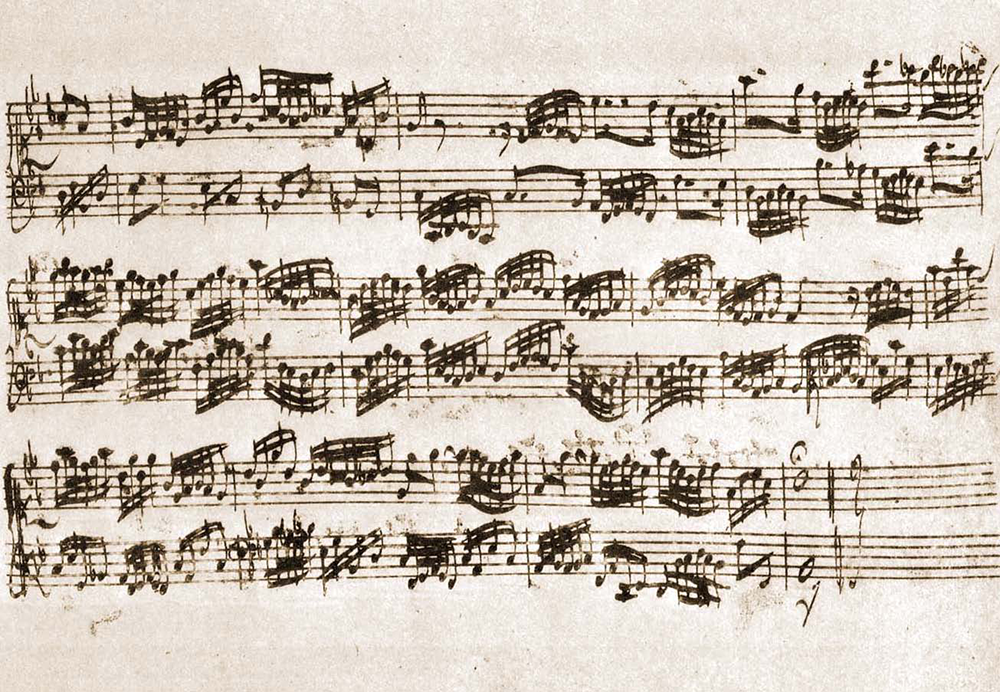Title: Dritte Stimme zu Bachs zweistimmigen Inventionen
Instrumentation: For any keyboard instrument
Year: 2019
Duration: 25 min.
Premiere: Gothenburg, Sweden 2019
Performer: Joel Speerstra and Ulrika Davidsson
Why add a third voice to J.S. Bach’s two-voice inventions? Certainly not to turn each invention into a three-voice sinfonia, which would serve only a mediocre pedagogical function (such as Max Reger’s “Schule des Triospiels” with his added third voice as pedal studies in the form of trio playing). One possibility is the manner in which the composer Helmut Lachenmann adds his third voice to Bach’s D minor invention. The added third voice does not function as a third voice typically would in a three-voice sinfonia where the presentation of the main motive is distributed more or less equally among the three voices. Although Lachenmann’s added third voice supports the implied harmonic structure of the invention, it often does so in modest and even banal ways, giving it, at least on the surface, a lesser weight than the other two voices.
One wonders why Lachenmann resorts to such a modest or even banal third voice? A possible answer can be found in his writings on music. In describing his collection of seven piano pieces Ein Kinderspiel (Child’s Play) from 1980, Lachenmann states that they employ simple patterns (such as a chromatic scale up and down) that are “totally unmusical, banal, or primitive to such a degree that you’re able to hear what actually happens in the background of that sound…where imagined melodies come through the resonances.” Indeed Lachenmann’s added third voice to the D minor Invention draws a listener’s attention to the motivic and harmonic resonances that proliferate throughout the invention thus bringing Bach’s original two voices into a foreground perspective. Such perspectivizing lays bare the mastery of Bach’s compositional technique and heightens a listener’s level of concentration.
My own added third voice to each of Bach’s fifteen inventions do not function as a third voice typically would in a three-voice sinfonia where the presentation of the main motive is distributed more or less equally among the three voices. Rather, in each invention, my added third voice seeks to destabilize the compositional balance of Bach’s original two voices through injecting (by adhering to the rules of Baroque counterpoint) something akin to a virus into each invention, which then metastasizes throughout the body of the composition. The virus is a parasite that disrupts the lyrical communication of each invention and damages its form. The virus integrates with the two voices, replicating along with them but remaining dormant until the right sort of conditions emerge for it to reactivate. The added voice, as a kind of repulsive force, subtly pushes apart the original voices (through such elements as disjointed and jarring cross-relations, or passing consecutive dissonances as if to suggest continual slippage between voices) to unravel not a mastery of contrapuntal technique but its fragility that human thought and labor continually endeavor to overcome. The perception of such fragility, I hope, can decenter our desire as listeners for compositional mastery and technological control in order to allow for a more materialist listening of Bach’s musical structures.
Link: www.wisemusicclassical.com/work/66640/Dritte-Stimme-zu-Bachs-zweistimmigen-Inventionen–Ming-Tsao/


